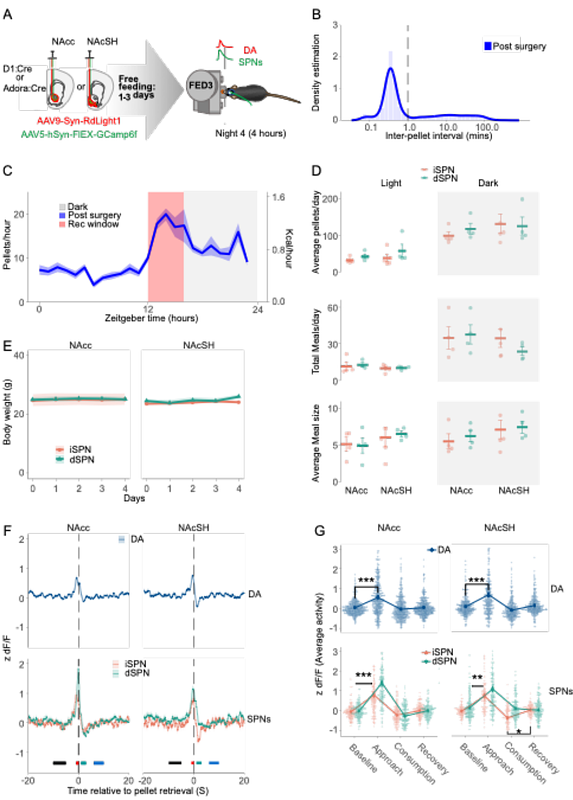Striatal signaling tracks naturalistic short-term fluctuations in hunger-satiety

Striatal signaling tracks naturalistic short-term fluctuations in hunger-satiety
Mourra, D.; Murphy, C. E.; Hourany, E.; Centeno, K.; Gnazzo, F.; Beeler, J. A.
AbstractThe neuromodulator dopamine is integral to feeding behavior, believed to modulate food pursuit and satiety. Here, we examine how dopamine and spiny projection neurons (SPNs) signaling the nucleus accumbens change during consumption as animals transition from hunger to satiety in naturalistic feeding. Both dopamine and SPNs transiently increase during food approach; however, the magnitude of this approach-related increase diminishes across progressive pellet ingestion, reflecting short-term satiation. Fasting dissociates the regulation of meal size and frequency-- termination and initiation, respectively-- with altered dopamine corresponding to changes in meal size but not frequency. Despite substantially decreasing feeding, pharmacological satiation via a glucagon-like peptide-1(GLP-1) agonist had no impact on dopamine signaling, suggesting that the GLP-1 agonist disengaged or decoupled dopamine from its modulatory role in food seeking.